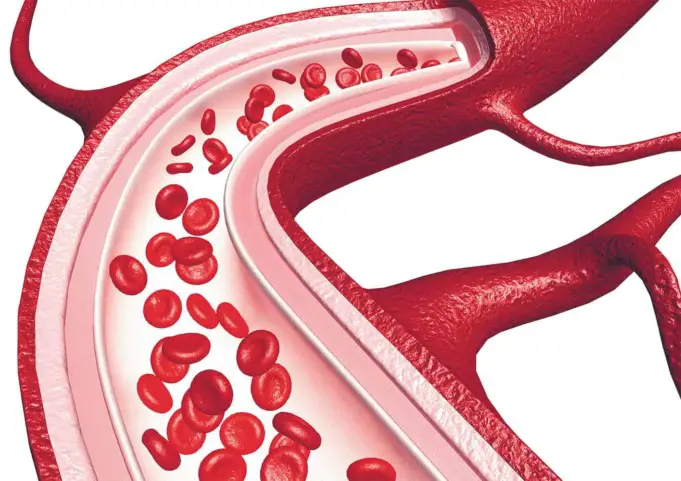Blood thinners are medications that keep the blood from clotting. They’re sometimes named anticoagulants. “Coagulate” means “clotting up.”
Blood clots can obstruct the flow of blood to the brain and heart. Inability of blood to flow to these organs may lead to a stroke or heart attack.
There is a risk of a heart attack or stroke due to a blood clot is increased by having high cholesterol. Taking a blood thinner can help reduce this risk. These medications are primarily used in patients with an irregular heart rhythm, called atrial fibrillation, to avoid blood clots.
Older blood thinners include warfarin (Coumadin) and heparin. There are also five new blood thinners available:
- Apixaban (Eliquis)
- Betrixaban (Bevyxxa, Portola)
- Dabigatran (Pradaxa)
- Edoxaban (Savaysa)
- Rivaroxaban (Xarelto)
How do blood thinners work?
Actually, blood thinners should not thin the blood. They keep it from clotting instead.
To generate proteins called clotting factors in your liver, you need vitamin K. Your blood clot is formed by coagulation factors. Older blood thinners such as Coumadin inhibit the proper functioning of vitamin K, which decreases the number of clotting factors in your blood.
New blood thinners such as Eliquis and Xarelto function differently; factor Xa is blocked. To make thrombin, an enzyme that helps the blood coagulate, your body needs factor Xa.
Are there any risks or side effects?
They can cause you to bleed more than normal because blood thinners prevent the blood from clotting. The bleeding can be serious often. Older blood thinners are more likely than fresh ones to cause unnecessary bleeding.
Call your doctor if when taking blood thinners, you experience any of these symptoms:
- new bruises without a known cause
- bleeding gums
- red or dark-brown urine or stool
- heavier-than-normal periods
- coughing up or vomiting blood
- weakness or dizziness
- severe headache or stomachache
- a cut that won’t stop bleeding
Blood thinners can interfere with some drugs as well. The effects of blood thinners are exacerbated by certain medications which make you more likely to bleed. In preventing a stroke, other drugs make blood thinners less effective.
If you are taking any of these drugs, let your doctor know before you take an anticoagulant:
- Antibiotics such as cephalosporins, erythromycin (Erygel, Ery-tab), ciprofloxacin (Cipro) and rifampin (Cipro) (Rifadin)
- Antifungal medicines such as Diflucan (fluconazole) and Griseofulvin (gris-PEG)
- Carbamazepine, the anti-seizure drug (Carbatrol, Tegretol)
- Antithyroid medications
- Pills For Birth Control
- Chemotherapy medications such as Capecitabine
- Clofibrate, the cholesterol-lowering drug
- The gout medicine Allopurinol (Aloprim, Zyloprim)
- Cimetidine, the heartburn relief drug (Tagamet HB)
- Amiodarone, a heart rhythm medicine (Nexterone, Pacerone)
- Azathioprine, an immune-suppressing compound (Azasan)
- Aspirin, ibuprofen (Advil, Motrin), diclofenac (Voltaren), and naproxen are pain relievers, such as (Aleve)
If you are taking some over-the-counter (OTC) medications, vitamins, or herbal supplements, let your doctor know as well. Blood thinners can also interfere with any of these items.
You may also want to consider tracking the amount of vitamin K in your diet. Ask your doctor how much food you can consume per day that contains vitamin K. Foods which have a high vitamin K content include::
- Cabbage
- Spinach
- Turnip greens
- Brussels sprouts
- Green tea
- Kale
- Collard greens
- Broccoli
- Lentils
- Lettuce
How does high cholesterol increase heart attack and stroke risk?
Cholesterol is in the blood and is a fatty material. Some cholesterol is produced by your body. The remainder comes from the food that you consume. Cholesterol is also present in red meat, full-fat dairy foods, and baked goods.
It can build up in your artery walls and form sticky blockages called plaques when you have too much cholesterol in your blood. The arteries are narrowed by plaques, which allow less blood to flow through them.
A blood clot may form if a plaque rips open. The clot may move to the heart or brain and cause a stroke or heart attack.
Outlook
Having elevated cholesterol raises the risk of stroke or heart attack. One way to avoid clots from developing is with blood thinners. If you also have atrial fibrillation, your doctor can prescribe one of these drugs for you.
There is a typical overall amount of cholesterol below 200 mg/dL. Less than 100 mg/dL is the ideal LDL cholesterol level. The unhealthy sort that forms plaques in the arteries is LDL cholesterol.
If the amount of cholesterol are high, to help get them down, you should make these lifestyle changes:
- Limit your diet to the sum of saturated fat, trans fat, and cholesterol.
- Eat more vegetables and fruits, fish and whole grains.
- When you are overweight, lose weight. Taking just 5 to 10 pounds off will help lower your levels of cholesterol.
- Do aerobic activities for 30 to 60 minutes per day, such as bike riding or walking.
- Quit smoking.
If you have attempted to make these improvements and your cholesterol is still high, you could be prescribed statins or other drugs by your doctor to minimize it
Follow your treatment plan closely to protect your blood vessels and reduce your risk of a heart attack or stroke.












